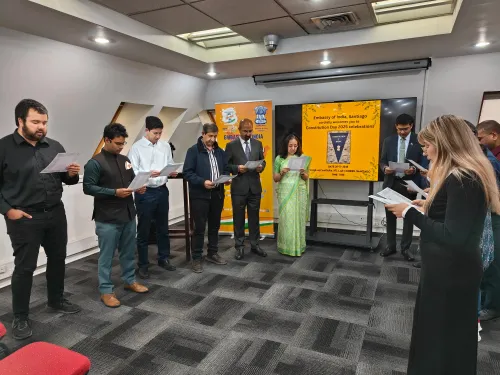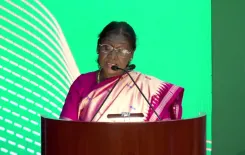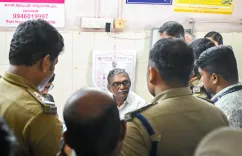Did S. Korea Achieve a Successful 4th Nuri Rocket Launch?

Synopsis
Key Takeaways
- Nuri rocket launched successfully, deploying 13 satellites.
- Main satellite established contact with King Sejong Station.
- Signifies a shift towards private sector involvement in space.
- Future launches planned for 2026 and 2027.
- South Korea aims to be among the top five space powers.
Seoul, Nov 27 (NationPress) South Korea has officially announced the successful launch of its indigenous space rocket Nuri, which lifted off from the Naro Space Centre. The main satellite, part of a total of 13 satellites, successfully established communication with the King Sejong Station located in Antarctica.
The 200-tonne Nuri rocket launched from the southern coastal village of Goheung, approximately 473 kilometers from Seoul, at 1:13 a.m., slightly delayed from the planned 0:55 a.m. due to a minor sensor issue, as reported by Yonhap news agency.
The Korea Aerospace Administration (KASA) and the Korea Aerospace Research Institute (KARI) confirmed that the primary satellite, CAS500-3, made contact with South Korea's Antarctic research facility at 1:55 a.m., enabling specialists to assess the satellite's condition.
During a press briefing, Science Minister Bae Kyung-hoon declared, "The fourth launch of Nuri was a success," emphasizing that all satellites have been successfully placed into orbit.
He also pointed out, "This marks a significant shift in the space ecosystem, transitioning from a government-centric approach to one that increasingly involves the private sector." He expressed the government's commitment to positioning South Korea among the top five global space powers.
About two minutes post-launch, the Nuri rocket successfully separated its first stage, followed by the second stage four minutes and 30 seconds into its journey.
Upon reaching a target altitude of 600 km, Nuri released the main satellite along with a dozen cube satellites.
The primary satellite will engage in space science research, focusing on measuring space magnetic fields and plasma, as well as observing auroras.
Nuri's mission concluded at 1:31 a.m., successfully completing an 18-minute flight before it will re-enter Earth's atmosphere and disintegrate upon descent.
South Korea initially launched the Nuri rocket in October 2021, but that attempt failed to achieve orbit with a 1.5-tonne dummy satellite. In June 2022, the rocket successfully placed a Performance Verification Satellite (PVSAT) and a 1.3-tonne dummy satellite into orbit.
The third launch occurred in May 2023, resulting in the successful deployment of a next-generation small satellite and seven cube satellites.
This latest launch was notable for being the first overseen by Hanwha Aerospace Co., aligning with the government’s long-term strategy to transfer space technology to the private sector.
Yoon Young-bin, the KASA administrator, reiterated the government's commitment to enhancing South Korea's capabilities in space exploration.
Looking ahead, the nation plans to conduct its fifth launch in 2026, followed by another in 2027. Young-bin mentioned that KASA seeks to secure additional funding beyond the sixth launch.









